Using proper interview body language in your task interview is important to your success. Effective non-verbal communication techniques are as essential as your verbal communication abilities.
Non-verbal communication represent over 90% of the message you are
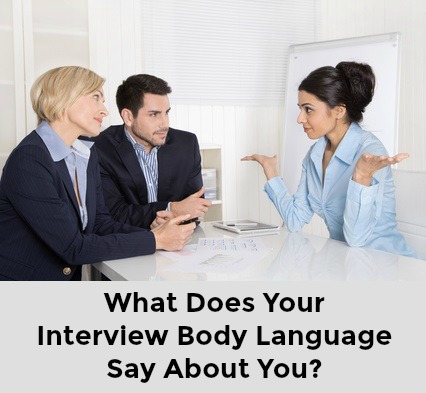
sending out in your job interview! Your spoken content only supplies 7% of the message the job interviewer is getting from you.
Both your body language (55% of the message) and the way you speak such as voice tone (38% of the message) are as crucial as the actual words you utilize in your task interview answers.
8 Essential Interview Body Movement Tips
Non-verbal communication pointers for task interviews
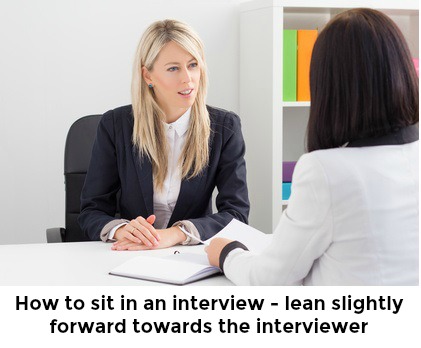
- 1. Interview posture – how to sit in your interview
- What is the best posture in an interview?
When the job interviewer uses you a seat at the start of the task interview, sit upright however not too stiffly in your chair. This indicates that you are comfortable and feeling confident. Hunching down in your chair offers the impression of nervousness and low self-esteem.
- A careless posture suggests a reckless mindset and a lack of energy. Sitting on the edge of your chair can come across as being anxious and tense.
- Relax and lean slightly forward, about 10 degrees, towards your interviewer. This provides the message that you are both interested and
involved Leaning back makes you appear too casual. Leaningto the side can be perceived as not feeling comfortable with the recruiter.
How you place your head also sends a message.
Tilting your head very
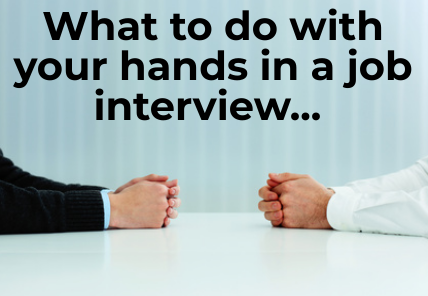
somewhat to one side stumbles upon as friendly and open.
- Keeping it
- directly comes throughout as reliable and self-assured.
- 2. Mirror the recruiter’s body language
- It is necessary to pay attention to the
- posture of your recruiter
. You can develop relationship by embracing the same
- posture as the other individual. This is called mirroring.
- if they have

- adopted a more official posture do the exact same up until you see that the
job interviewer has actually unwinded and become less formal.
3. Interview body language – what to do with your hands
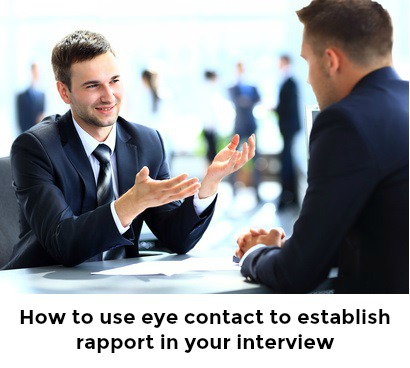
- If you are uncertain of what to do with your hands, rest them loosely
- gripped in your lap or on the table in front of you.
- Manage your hands by knowing of what you are finishing with them.
- Having your hands above the neck, adjusting your face or your hair, is unprofessional and communicates anxiousness and stress and anxiety. Keep your hands
- far from your face. Interview body language professionals will tell you that touching the nose or lips can suggest that the candidate is lying or unsure.
Folding your arms across your chest recommends a closed and
- defensive mindset.
- Waving your hands and arms around can be perceived as uncertainty and a lack of professionalism. Typical wisdom is that the
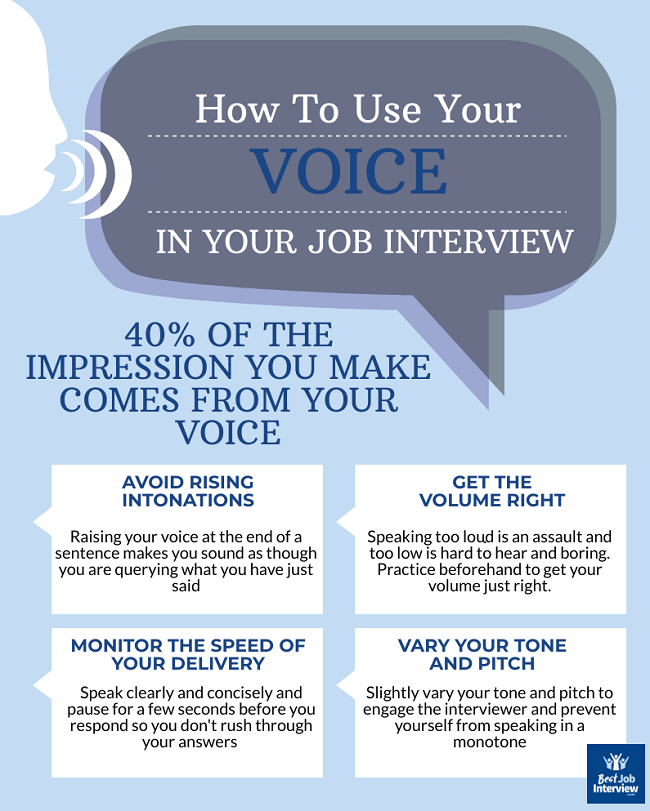
less you move your arms and hands about the more positive and in control you are Practice a comfortable way to loosely place your arms and hands while you are sitting, both at a table and in a chair on its
- own 4. Be aware of your legs
- Know the interview body movement message your legs are giving.
- Lots of leg motion is both distracting and suggests nervousness
- Resting one leg or ankle on top of your other knee makes you look too
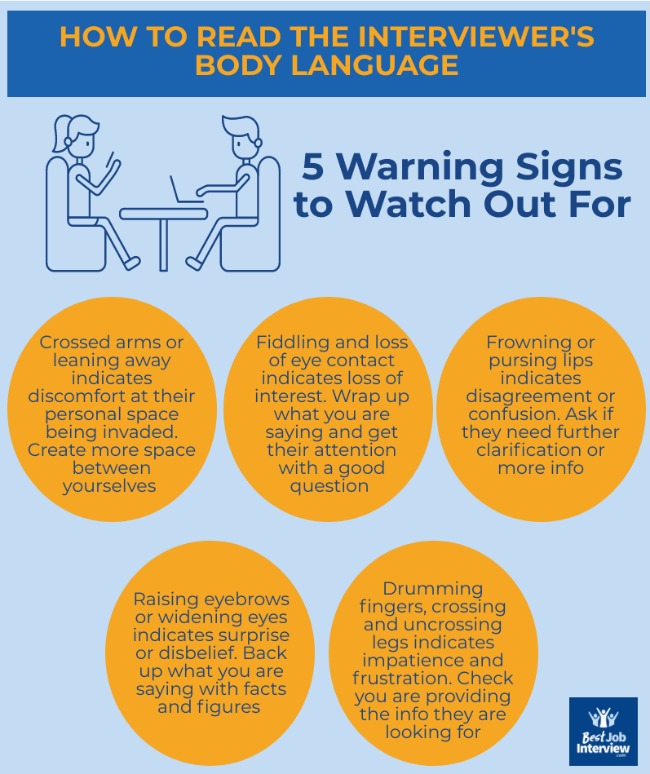
casual and encounters as big-headed.
Crossing your legs high up communicates a. protective attitude in the one-on-one context of a job interview.
Crossing them at the ankles or placing both feet flat on the floor.
conveys a positive and professional look during the job interview.
5. Make eye contact and develop relationship if. .
the recruiter is talking and you wish to show that you are actively.

listening, you require to initiate direct eye contact and maintain it
Prevent appearing as if you are looking strongly by blinking at

routine intervals and moving your head every so often, such as offering a little nod.

When you are doing the, interview body language experts suggest that talking you require to hold eye contact for periods of about 10 seconds.

before looking away quickly and then re-establishing eye contact.

Over-using direct eye contact when you are speaking can come across as challenging the job interviewer.
Generally the listener.
More Job/Career Ideas & Resources

preserves direct eye contact for longer than the speaker who breaks it off at periods.
Looking continuously down makes you appear insincere or submissive. If you are referring or making notes to, it is acceptable to look down information in front of you.
Article source: http://www.best-job-interview.com/interview-body-language.html



